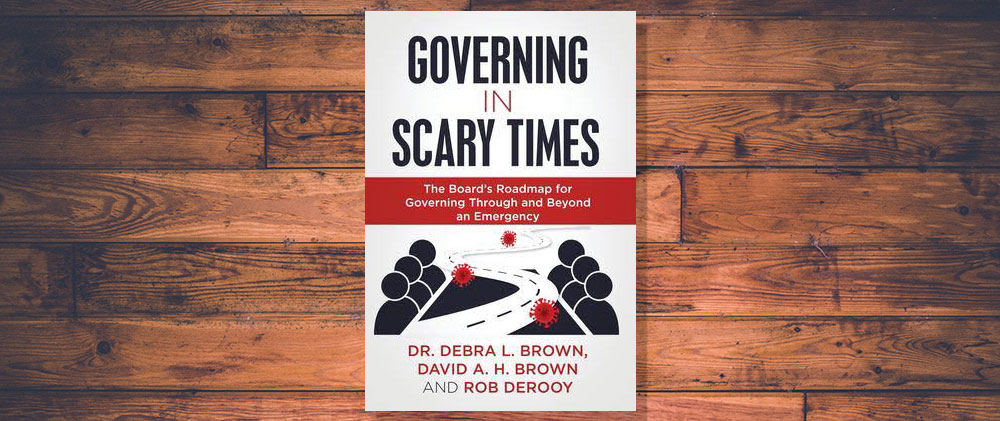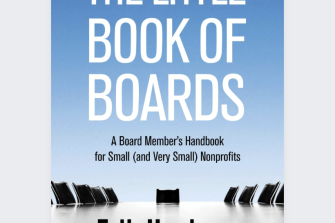The short- and long-term impacts of Covid on governance practice are undeniable, and should be an area for analysis, reflection and learning.
This publication was released in 2021, based in part on simple research that began in April 2020—just a few weeks into the pandemic—and the authors’ subsequent engagement with clients.
The writers are all associated with the Canadian consultancy Governance Solutions and have written several related books.
A simple poll across 375 directors indicated that 93% of them expected permanent change to their organisation and 20% anticipated that change would be significant. That was at the beginning of the pandemic; if asked again, one suspects that second number would be far higher.
The opening observation will be familiar ground. Early in the crisis, directors focused on the health and safety of employees, ensuring business continuity, risks to reputation, and stakeholder communications.
An early useful observation is that boards were forced to think in four simultaneous timelines:
- survival—getting through the crisis
- stabilising—recalibrating, regrouping in the aftershock
- sustaining—adjusting to the new realities
- succeeding—imagining the future and prospering within it.
The book is largely organised around similar themes, with observed behaviours by their clients and others. Adding to the multiple timelines concept are the following:
- an opportunity to reshape culture
- the danger of cognitive bias in crisis thinking
- multiple industry shakeups
- compelling need for vision casting to give people hope
- demand for adaptability and resiliency in the organisation
- excellence in crisis communication
- collaboration and opportunity with competition
- significant rapid innovation.
The book’s chapters variously interrogate these areas by providing prompts and questions a board might apply.
As expected, there is a solid discussion on risk. Very few people saw Covid coming; if they did, it was likely a minor and disregarded item on the risk map. We have often written on the limitations of risks reviewed in isolation and the authors remind us that, ‘research tells us that the risk events that often prove catastrophic to an organisation are usually the result of the incidence of two or more low likelihood but high severity risks, where the incidence of the first risk increases the probability and/ or impact of the second, and so on’. Risk planning needs to acknowledge interdependencies and build them into board discussions. The only way to test ‘known unknown’ risk is through such tools as scenario planning and stress testing.
Covid has accelerated trends already apparent, notably the work environment and the competition for talent. The argument presented is that we all had to make sacrifices ‘for the greater good’ during this time and hence employees are now looking for a better social covenant with their employers.
Certainly, we see in our work a heightened need to be clear about organisational values. The shift to, at least in part, a virtual world is permanent, along with remote working. This poses a long list of questions around policy, culture, training and employment packages.
The book reflects one of our early Covid observations: under-pressure boards found that much of what had previously seemed important was actually not. Many items could be dealt with under a consent agenda or indeed should be left with management.
Some helpful questions probe this area. The management /governance line will have shifted and needs to be reviewed and reset. Therefore, does the board need to stop doing things and get back into true governance mode?
Crisis also presents opportunity. By necessity, many organisations came very quickly to new ways of working. Urgency and innovation were a clear feature of this period. There is a helpful discussion on learning. A board is a learning entity and the past two years mandate a considered approach. As the authors note, ‘There’s a growing body of research indicating that this [learning most from our failures] is not true. We learn as much or more from our successes, and we learn how to be successful as an organisation from success’. Equally, things will have gone wrong during this time and the culture must ensure that mistakes do not get swept under the rug but are available to learn
from.
A prudent caution is offered to boards that the level of urgency cannot be sustained, or people will burn out. But at the same time, if there has been a more entrepreneurial spirit, how should that be maintained?
Looping back to the opening statement of expected change, 95% of organisations surveyed expected change to goals and objectives as they come out of the pandemic. Given that a central role of the board is performance oversight, it follows that the metrics likely need to change and material brought forward by management will need to be reviewed. The observation during this time was that ‘boards want assurance that management is not losing sight of running the business, so they have been ruthless and targeted on the most significant and meaningful strategic objectives’. We are reminded that any strategic process must deliver just a small number of agreed SMART objectives. Now may be a good time to weed out those less useful and to review the acceptable tolerances around monitoring criteria—liquidity for example. See the recent article, A Fresh Look at Strategy in Good Governance 83.
Consistent with the need for the organisation to learn from this experience it is suggested that the board should pause and check on its own performance during the crisis: how well did we do in responding to events?
Finally, communication is paramount during Covid, and a check-in with stakeholders would be wise to see how the organisation performed. Included is the wonderful George Bernard Shaw quote, ‘the single biggest problem with communication is the illusion that it has taken place’.
Is this a useful book? Yes, in part. There needs to be reflection on governance performance and subsequent learning from the Covid crisis. This occasionally feels like an extended essay stretched to a book and reads in part as a consultant’s check list. But there are useful challenges to boards and that makes it worth some attention.








